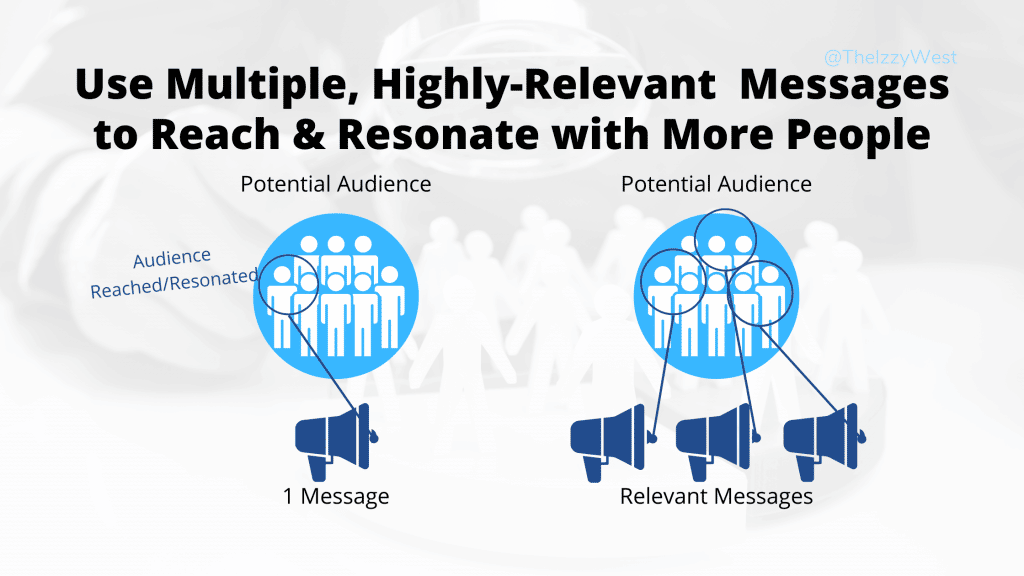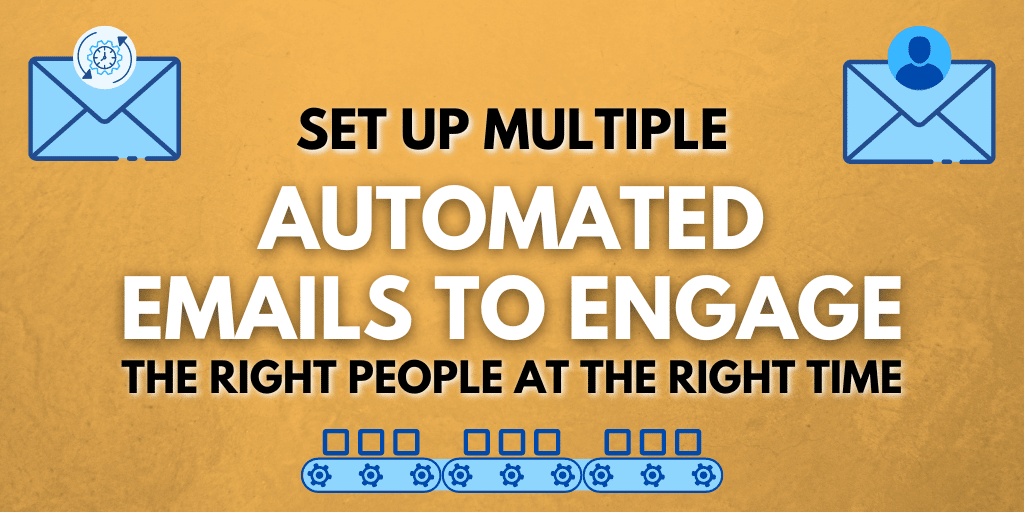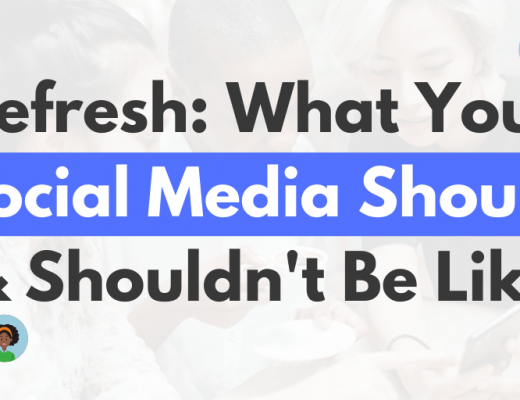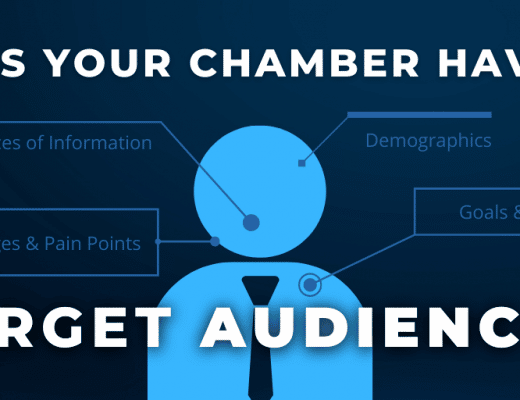Not everyone knows what your chamber of commerce does or has to offer. By segmenting your audience you can identify those that would benefit most from your services, and better communicate with your community. By sorting your audience into different avatars or groups, you create different audience segments that make it easier for you to understand your audience and create a message that better resonates with them.
Note: an avatar is basically a sheet of paper where you’ve described one specific person or segment in your audience. See How to Plan Your Chamber’s Target Audience for Effective Membership Marketing for more.
There are many cases where you may feel the need to further segment and create multiple avatars.
- Your chamber offers multiple benefits of membership that solves different problems for different businesses. These would serve different types of people or segments.
- There are significant differences in your market’s demographics. You need to create content for these various groups of people. This could be minorities, young professionals, etc.
- You want to separate an “A List” of your biggest buyers and brand advocates.
- You still need to talk to the community about the chamber, even if they’re not going to become chamber members.
Segmenting also gives you a better general understanding of your market, which is always helpful.
Do You Need to Segment?
Your list of current chamber members is a segment of your audience, but they are not collectively a single avatar. Different members want & need different things. Different potential members want & need different things.
Each group of members that want the same thing could be in yet another, more specific segment – which is why it’s important to think more specifically about these smaller groups of people with similarities. (Example: Current Members that are also interested in Advocacy).
You can round-up all your relevant in your email newsletter, but only send other mass emails to the segments of people that are actually interested in them. This helps you give the right message to the right person, and cut down on the quantity of emails you send one person – which in turn helps your open rate. By sending all of your emails to everyone, you’re unintentionally training them to ignore you because the emails they’re getting from you don’t feel relevant.
It’s always useful to segment, but there are some specific reasons why you may feel the need to.
If you have an audience avatar already, you may find a growing number of people in your audience who don’t fit this profile. You may need to identify this second group and create a second avatar or profile to better understand them. Once you understand this audience you can then decide how to better serve them, convert them to members, or figure out if you’re talking to the wrong people.
You may want to create a new segment because of a new program you’re implementing and you need to engage the relevant people.
Or you might just be diving into your marketing and you’ve realized that promoting all the benefits of membership in every piece is too generic, and want to promote the right benefit to the right person.
How Do You Segment Your Audience?
To clarify, when I say segmenting, this can be ‘physical’ like having multiple email lists, but it can also be more of an idea, like having multiple audience avatars that you think about and create separate content for.
There are many ways to segment your audience depending on your goals. These include:
Demographics. You may have members who live in different areas, represent two or more age groups, have various income levels, and so on. Many businesses find it useful to separate into geographic areas; Even if you’re a small local chamber you likely have a this or that side of town that’s a little different.
Psychographics. You have members motivated by various needs, segment based on these. People may have vastly different personalities, lifestyles, and core values. This is particularly important for chambers of commerce because you’re talking to so many people that are in various stages of business, and professionals in different job roles.
Buying Behavior. You likely already understand segmenting your audience into current members and potential members. However, it’s also useful to know who would invest bigger bucks and into what.
What specific benefits of membership are most interesting or beneficial to them? What’s their budget like? Are they likely to just keep renewing or do you need to routinely show them why membership is a worthwhile investment?
Mission & Goals. Find a way to segment an audience that particularly cares about local issues or your programs and either has the time or money to invest through the chamber.
Obviously, this is more qualitative information so it’s going to take a little extra manual work than some other automatic segmentation I talk about, but your sales people already understand this. Instead of trying to cold sell your highest investments or sponsorships to everyone, the best sales people find what businesses care about and match the outcome or need for a sponsorship that is the most relevant to that business’s mission.
Tools to Help You Segment Your Audience
As I mentioned the first ‘tool’ can be a simple word documents that detail your different audience avatars. After that, look at your marketing assets for more segmentation. This is really the most important because a large part of segmenting is just understanding different parts of your audience.
But, I know chamber people appreciate more specific & actionable items, so here are some other ways to use or see segments.
An easy example is something you’re probably already doing – targeting location, location, location. Most commonly, this is using zip codes in paid advertising, having partnerships or ads in local newspapers that share your local demographic, etc.
You’re probably also on Facebook more than another social media platform because you’ve deduced that’s where more your members are (or whatever other top platform you’ve chosen). And a social media best practice is to post different content on different platforms because different people are there with different intents. For example, you don’t promote upcoming events as much on Instagram because you can’t put the registration link in the post, but you do post event photos afterwards because people like seeing pictures of people they know. An easier example is the obvious more business related content on LinkedIn because it’s more commonly used for B2B.
You might have (or now create) separate email lists for current members, potential members, big fish investors, business by categories, people interested in networking events, etc. For me, some of these lists were in my email marketing provider (like Constant Contact), while others were accessible through the different communication options in Chamber Master. Check your CRM to see if you can send an email based on a member’s industry or other demographics.
To take that a step further, you can auto-add people to lists based on what they click on in your emails. For example, you might create a list called “Clicked: Networking Events” and when you link to a networking event in your newsletter, mark the option to add clicks to this list.
Or for a quick success, you can immediately create & use a Segment inside Constant Contact using rules to filter down a list. For example, only your newest members/representatives:
You may create or plan traffic streams for each segment.
One stream leads to one landing page, the next stream to another page that’s tailored to the second demographic. These pages would then have targeted offers for each group. Having a plan for these specific streams to the end result would be a Funnel, which you’ll see me talk more about. But it’s hard to plan a funnel if you don’t have a target audience.

Recommended: How an Economic Development Marketing Funnel Drives FDI & Business Attraction
A more actionable way to look at this is to consider traffic on certain types of web pages to be different segments using tools like Google Analytics or a Custom Audience in Facebook Ads. For example:
- Pages about your pricing, benefits, or join page are relevant to ‘potential members’
- People reading a blog post about starting a businesses or other basic business tips is a different segment that those reading about things to do around town
- Visitors coming to your website to find local events & businesses are still important to you, but you will talk about different things to them than you would a member.
Again, people can be in more than 1 segment. But by thinking this way you can talk to a specific segment at a time, which makes you more valuable to them. I recommend taking a look at other chamber websites and seeing what other webpages they have created to serve their different audiences.
There’s really no end to what you can do. You can keep segmenting and drill down to each group within your market so you can offer content and benefits that better suit them. I realize this is a lot, so I’d like to reiterate what I think is the biggest point – a lot of segmentation is just understanding your audience, plus where to talk to them & about what.
Next:




